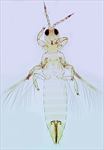
Female

Antenna
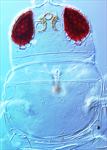
Head & pronotum
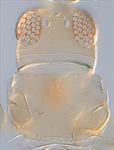
Head & pronotum
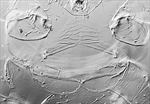
Prosternal basantra
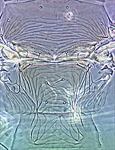
Mesonotum & metanotum
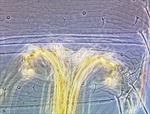
Tergites VII–VIII

Fore wing
Female and male macropterous; body colour yellow, antennal segment VI brown in apical two-thirds; fore wing pale with brown area at base and medially and a weakly shaded area sub-apically. Antennae 8-segmented, VII–VIII slender, III & IV each with slender, forked sense cone. Head as wide as long, with 2 pairs of ocellar setae, pair III on anterior margins of ocellar triangle. Pronotum without sculpture, with 2 pairs of short posteroangular setae and 4 pairs of posteromarginal setae. Prosternal basantra reticulate. Metanotum with transverse lines of sculpture, median pair of setae near centre of sclerite. Meso and metafurca without or with very weak spinula. Fore wing slender, first vein with 3 setae on distal half, second vein with 4 setae. Tergites with sculpture lines medially. Sternites with 3 pairs of marginal setae, median pair on VII arising at margin.
Male smaller, tergite IX with 2 pairs of stout thorn-like setae between which is a double row of small tubercles; sternites without pore plates.
The genus Danothrips currently includes 11 species all from the Oriental region, but the other ten species are known from few specimens (Bhatti, 1980). Species of this genus are similar in appearance to species of Chaetanaphothrips, but do not have the granulate area around the spiracles on the eighth abdominal tergite so greatly enlarged.
Breeding in flowers, on young fruits, and on leaves of various plants including species of Musa, Citrus and Anthurium; reported as causing damage to citrus in Florida, and to bananas in the West Indies.
Originally from southeast Asia, and recorded from Sumatra and Australia, as well as Hawaii and the West Indies.
THRIPIDAE - THRIPINAE
Danothrips trifasciatus Sakimura
Danothrips trifasciatus Sakimura, 1975: 125
Bhatti JS (1980) Revision of Danothrips, with descriptions of two new species. Journal of Natural History 14: 547–558.